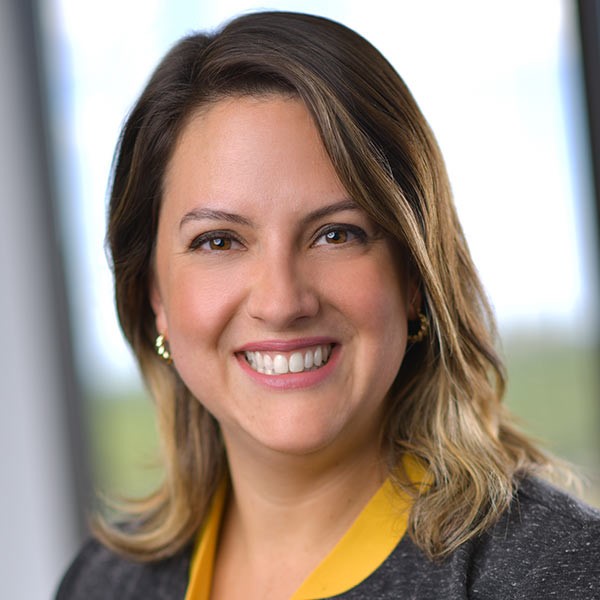4 Tips for Recruiting Donors to Your Planned Giving Program

Planned giving describes a donor’s commitment to contribute funds at a future time through their estate or will. It’s a popular form of individual giving—according to Giving USA 2023, bequests (the most common type of planned gift) accounted for 9% of total giving in 2022, or $45.6 billion.
Growing your nonprofit’s planned giving program through a comprehensive campaign or other targeted fundraising effort allows you to engage donors on a deeper level and diversify your fundraising streams. This process starts with creating a donor journey that introduces prospective donors to planned giving and gets them excited about this opportunity.
This guide explores how to do just that by offering four expert tips for effectively recruiting more planned donors to your program.
1) Use data insights to craft a prospect list.
Just as you do with major donor fundraising, you can use prospect research to help build a list of potential planned giving donors. Leverage a combination of prospect research tools, your nonprofit’s database, and AI solutions to scan your donor base for supporters who exhibit characteristics that indicate they might be willing to make a planned gift, such as:
- Wealth markers, including income, property ownership, and stock holdings
- Past donations to your organization
- Length of their involvement with your organization
- Demographics such as age and marital status
With this information, you can start to build a profile for prospective planned giving donors and strategize the best ways to reach these donors based on their unique characteristics and needs.
You may be inclined to focus your research on your existing pool of major donors, but don’t overlook small and mid-level donors. Research from Stanford has shown that small donors often make up a significant portion of planned giving programs. One organization cited in the study had 70% of their planned donations come from supporters who weren’t in their top 10% of donors. Smaller donors are often big savers, meaning they’re optimally positioned to make planned donations.
2) Understand the benefits of planned giving.
Recognizing the benefits of planned giving for donors will help you design a more compelling case for support that speaks to donors' motivations.
Here are a few common planned giving benefits to consider when building your outreach approach:
- Tax benefits. Several different types of planned giving are eligible for tax benefits. For example, contributions to charitable remainder trusts qualify for partial charitable deductions. Bequests are deductible against the value of an individual’s estate, making them an effective way to decrease estate taxes.
- Ability to create a positive, long-lasting impact. Planned giving allows donors to make a major impact on your beneficiaries that will resonate for years to come. For example, a planned gift can fund a scholarship for a high school senior to attend college or help keep your hospital stocked with the supplies it needs to be successful.
- Control over philanthropic giving. Most planned gifts are restricted, meaning the donor can designate the program, project, or person they want the funds to go toward. This gives donors greater control over how their money is used at your organization, ensuring they make their desired impact.
Incorporate these benefits into your request for support. Presenting planned giving as a win-win opportunity for donors and your organization makes your ask more compelling for supporters who may be on the fence about whether to get involved.
3) Broach the topic strategically.
Talking about planned giving can be a delicate process, as it may cause donors to think seriously about heavy topics like making their wills. So, it’s important to create a positive donor experience by approaching this topic carefully.
Follow these tips to effectively broach the topic of planned giving with prospective donors:
- Use upbeat messaging. Make your outreach to donors as positive and uplifting as possible. Don’t talk about leaving behind a legacy as it can make donors think about death and dying. Instead, focus your messaging on creating a legacy or having a far-reaching, long-term positive impact.
- Get to know each prospect and their philanthropic goals. Every prospective donor is unique and may have different charitable goals. Present several giving options so supporters can choose the option that best aligns with their values and interests. These could include bequests, charitable remainder trusts, charitable gift annuities, or gifts of securities or real estate.
- Offer resources for making planned gifts or bequests. Provide tools and resources to help planned donors make their gifts. For example, Georgetown University’s planned giving program offers robust information about every type of planned gift they accept, including what the gift entails, how to make the gift, and email addresses and phone numbers to contact for more information. Be as descriptive and clear as possible so donors know exactly what the process entails.
Donors should have all the information they need to confidently decide which type of planned giving works best for them and their families. They should also feel confident that your nonprofit will support them through every step of the process with resources and a helping hand when needed.
4) Leverage Social Proof
Planned giving research shows that social proof greatly impacts whether donors include charitable gifts in their estate plans.
The Stanford study we referenced earlier found that when prompted with a basic request, only 10.4% of people will choose to include these gifts. However, when presented with an ask that incorporates social proof (the example provided is “Many donors to the museum choose to leave a gift in their will. Is that something you’d be willing to do?”), over 15 percent decide to give, and their donations tend to be twice as large.
Therefore, it’s worth it to incorporate social proof into your planned giving requests. You can do this in the following ways:'
- Gather data about your planned donors. Collect qualitative data about current planned donors and their thoughts and opinions on your program. Send out satisfaction surveys to assess how much they enjoy your program. Then, share your findings with prospective donors. For example, you could say, “100% of current donors in our planned giving program say they appreciate the program’s flexibility.”
- Share stories about the impact of planned giving on your website. Create an information page with testimonials from planned donors and stories that highlight the importance of their gifts. For instance, you could share a story about how one planned donor was a former beneficiary of your nonprofit’s community garden. Through their planned gift, they were able to fund a garden expansion project, providing more fresh food for the community for years to come.
- Promote testimonials across your marketing platforms. In addition to your website, use communication channels such as social media, email, and direct mail to share planned giving stories and testimonials. You could create a campaign to share short testimonials from current planned giving donors about why they decided to get involved. For example, ask planned donors to complete this sentence: “I give because…” Then, share their responses across your marketing channels to inspire prospective donors who may be interested in your program and relate to the testimonials.
Donors will feel reassured that they’re making a wise decision to contribute a planned gift when they see that other supporters feel fulfilled by their decision to do so.
_________________________________________________________________________________________________________________
Planned giving provides a way for donors to foster a positive legacy, but many prospective supporters may not know about these opportunities. With these strategies, you can provide prospects with the insights they need to make informed decisions that align with their charitable goals, leading to potentially significant contributions to your nonprofit.
 Allison Gannon
Allison Gannon
Assistant Vice President of Operations at BWF
Allison engages with current and prospective clients of the global fundraising consultancy BWF to identify the best solutions to achieve their goals. She partners with the BWF team to ensure they are successful in all their endeavors in addition to coordinating with industry partners to develop the best services for our clients and the sector.




